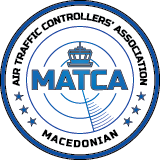It is true that war brings great sacrifices, but sometimes it also opens new doors. During the Second World War, the majority of men were recruited to fight at the front and many new positions opened up for women who until then just sat at home. One of those professional positions is air traffic controller which, starting in 1941, became a challenge for a certain number of women. Who was the first female controller cannot be said for sure, but several names are mentioned who started working in this specific position in the same period. You can read more about the history of this profession at the following link: The First Women Controllers (faa.gov)




Looking at the previous statistics in the aviation professions, until recently women were only visible as dispatchers or flight attendants. In the last ten years, the percentage of women as pilots, air traffic controllers, aeronautical engineers, etc. has gradually increased, but according to the latest statistics, that number is still less than 10% of the representation of women from the total number of aviation personnel.
For example, among pilots, women are only 5.26% of the total workforce, and according to a joint study by the Royal Aeronautical Society and the University of West England, this is due to several factors such as sexism, a lack of female role models, but also insufficient transparency around the recruitment process. On the other hand, the percentage of men as cabin crew in the flight crew at the world level is still only 16%. Aircraft engineers women are only 8% of the total number etc.
In our country, the representation of female controllers and assistant controllers is only 6%, a figure lower than the world average of 10%.
At the global level in the past few decades, conditions for increasing the female percentage of professional aviation staff are already being created.
The real reason why few women apply for air traffic controller applications will have to be searched deeper in the core of social stereotypes and home upbringing, but increasing the percentage of female air traffic controllers is a tireless mission, which will continue in the future.


